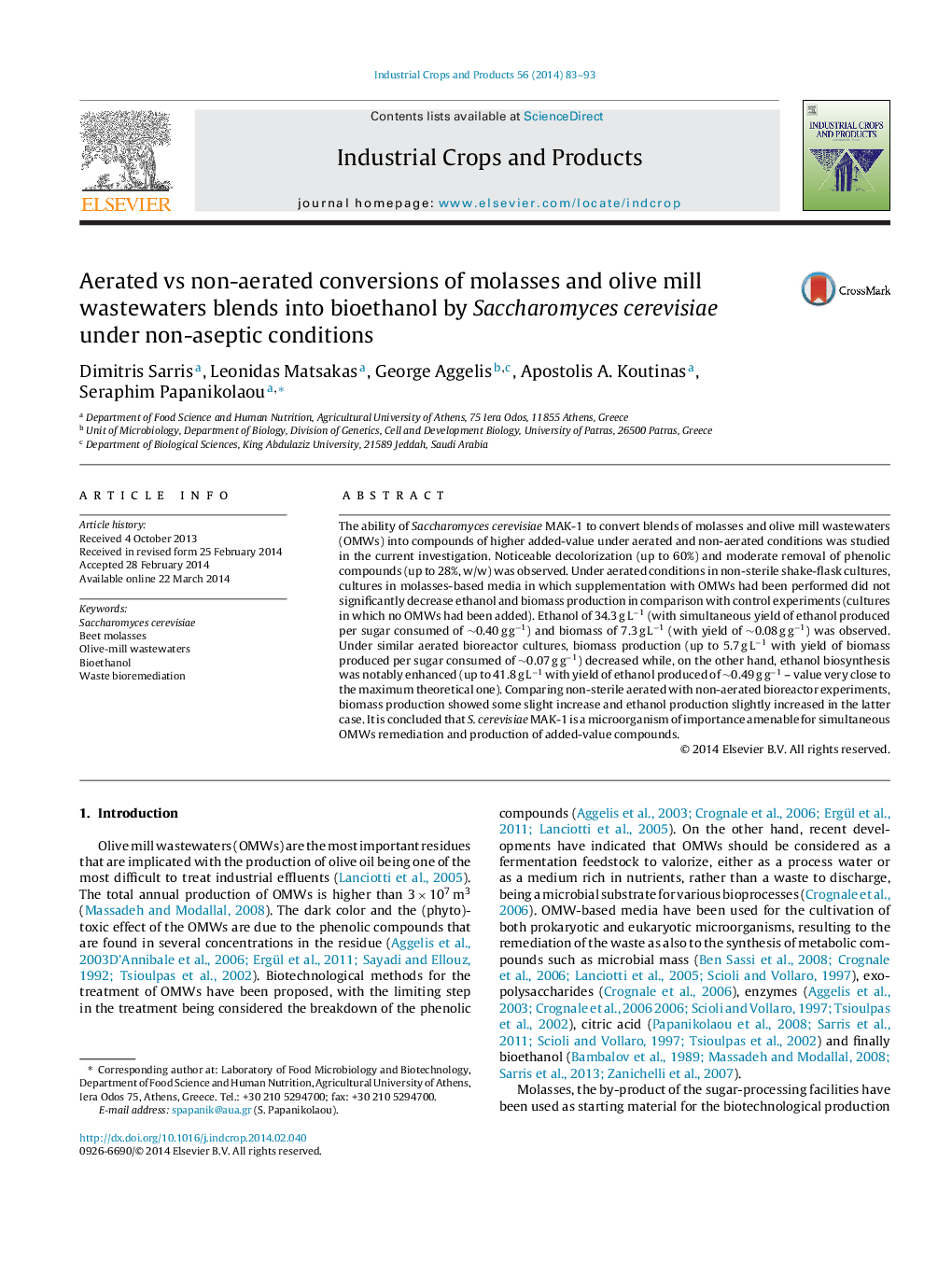| کد مقاله | کد نشریه | سال انتشار | مقاله انگلیسی | نسخه تمام متن |
|---|---|---|---|---|
| 4513310 | 1624853 | 2014 | 11 صفحه PDF | دانلود رایگان |

• Satisfactory bioethanol production by Saccharomyces cerevisiae on molasses/OMWs blends.
• Noticeable decolorization and moderate removal of phenolic compounds during bioethanol production process.
• Processes performed under completely non-aseptic conditions.
• OMWs can partly or completely substitute tap water in bioethanol production process.
The ability of Saccharomyces cerevisiae MAK-1 to convert blends of molasses and olive mill wastewaters (OMWs) into compounds of higher added-value under aerated and non-aerated conditions was studied in the current investigation. Noticeable decolorization (up to 60%) and moderate removal of phenolic compounds (up to 28%, w/w) was observed. Under aerated conditions in non-sterile shake-flask cultures, cultures in molasses-based media in which supplementation with OMWs had been performed did not significantly decrease ethanol and biomass production in comparison with control experiments (cultures in which no OMWs had been added). Ethanol of 34.3 g L−1 (with simultaneous yield of ethanol produced per sugar consumed of ∼0.40 g g−1) and biomass of 7.3 g L−1 (with yield of ∼0.08 g g−1) was observed. Under similar aerated bioreactor cultures, biomass production (up to 5.7 g L−1 with yield of biomass produced per sugar consumed of ∼0.07 g g−1) decreased while, on the other hand, ethanol biosynthesis was notably enhanced (up to 41.8 g L−1 with yield of ethanol produced of ∼0.49 g g−1 – value very close to the maximum theoretical one). Comparing non-sterile aerated with non-aerated bioreactor experiments, biomass production showed some slight increase and ethanol production slightly increased in the latter case. It is concluded that S. cerevisiae MAK-1 is a microorganism of importance amenable for simultaneous OMWs remediation and production of added-value compounds.
Journal: Industrial Crops and Products - Volume 56, May 2014, Pages 83–93